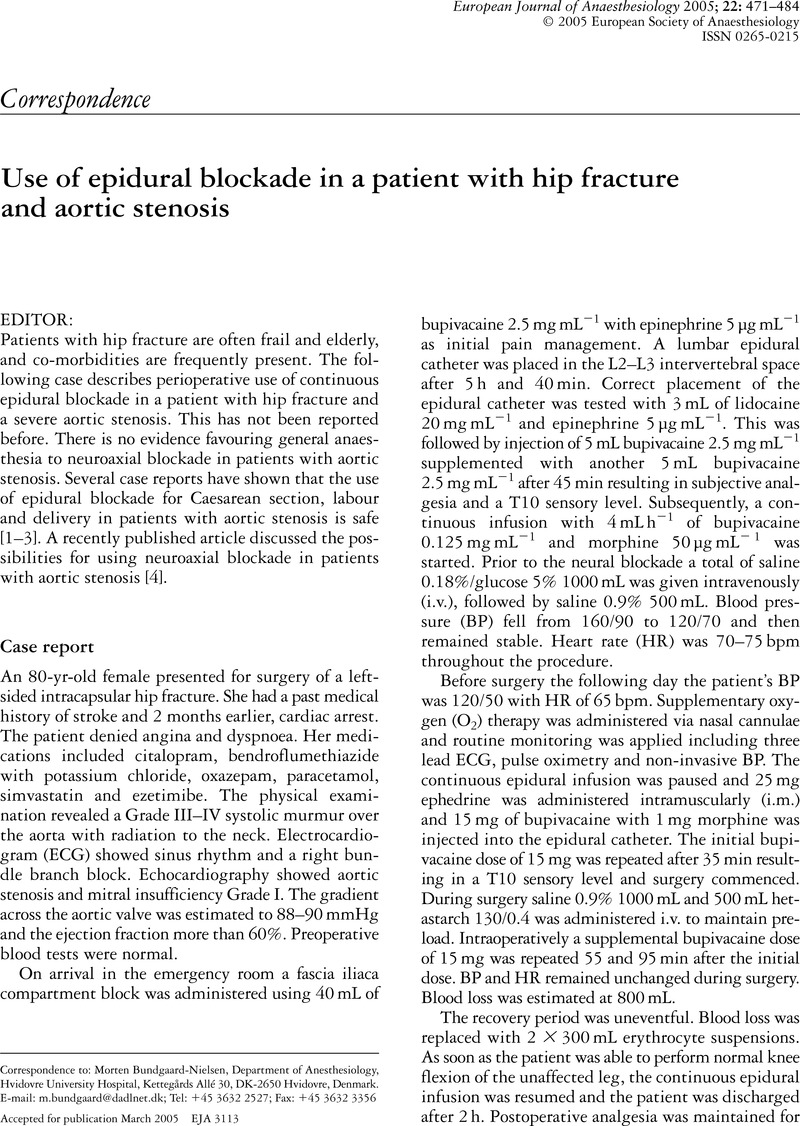Crossref Citations
This article has been cited by the following publications. This list is generated based on data provided by Crossref.
Dhir, Shalini
and
Fuller, John
2007.
Case report: Pregnancy in hemodialysis-dependent end-stage renal disease: anesthetic considerations.
Canadian Journal of Anesthesia/Journal canadien d'anesthésie,
Vol. 54,
Issue. 7,
p.
556.
Trainor, Dominic
Borthwick, Emma
and
Ferguson, Andrew
2011.
Perioperative Management of the Hemodialysis Patient.
Seminars in Dialysis,
Vol. 24,
Issue. 3,
p.
314.
Baidya, Dalim Kumar
Maitra, Souvik
Chhabra, Anjolie
and
Mishra, Rajshree
2012.
Pregnancy with renal disease – Pathophysiology and anaesthetic management.
Trends in Anaesthesia and Critical Care,
Vol. 2,
Issue. 6,
p.
281.
Hegde, Swathi
and
H G, Manjunath
2016.
A PROSPECTIVE, RANDOMISED, DOUBLE-BLIND COMPARATIVE CLINICAL STUDY OF 0.5% BUPIVACAINE AND 0.75% ROPIVACAINE FOR SCIATIC NERVE BLOCK IN PATIENTS UNDERGOING ELECTIVE BELOW KNEE SURGERIES.
Journal of Evolution of Medical and Dental Sciences,
Vol. 5,
Issue. 87,
p.
6480.
Kanda, Hirotsugu
Hirasaki, Yuji
Iida, Takafumi
Kanao-Kanda, Megumi
Toyama, Yuki
Chiba, Takashi
and
Kunisawa, Takayuki
2017.
Perioperative Management of Patients With End-Stage Renal Disease.
Journal of Cardiothoracic and Vascular Anesthesia,
Vol. 31,
Issue. 6,
p.
2251.
Hassanin, Abeer A
Moharam, Hossam Elden M
Hassan, Shimaa H
and
Hashish, Sahar A
2023.
Fentanyl as an adjuvant to the local anesthetic in the peribulbar block for vitrectomy operations.
Egyptian Journal of Anaesthesia,
Vol. 39,
Issue. 1,
p.
167.





